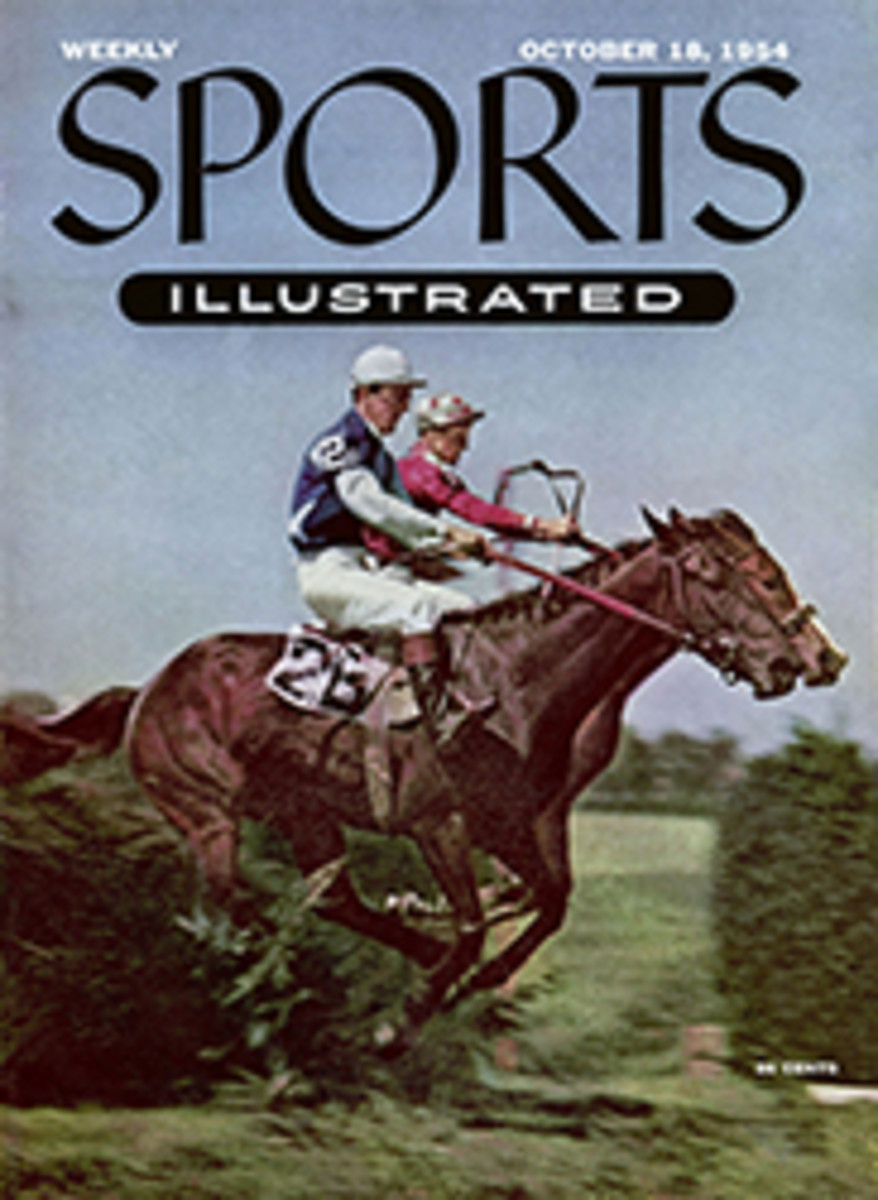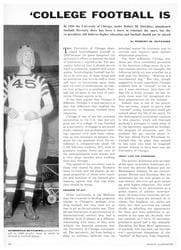
PORSCHE SPEEDSTER ON TRIAL
Out of West Germany five years ago emerged a low-slung, racy German automobile which revolutionized all previous concepts of what could be expected of a short wheel-base and a small; four-cylinder engine. Last creation of the old German master, Dr. Ferdinand Porsche, the tiny car swept through a stunning series of racing victories and quickly won a worldwide following. Air-cooled and rear-engined, it also featured aerodynamic styling and comfort which were years ahead of its contemporaries. This month the latest of a line of Porsche models arrived in the U.S.: the Speedster, first of a new medium-priced series. To give the new car a thorough test, SI sent Motor Sports columnist John Bentley out to Linden airport in New Jersey to put the Speedster through its paces. His report follows:
The Speedster which Hoffman of New York rolled out on the line for me was a vivid, bright-red production model with black top and upholstery and the 55-hp engine of the earlier America model. Slightly higher on the sides than its predecessors, it nonetheless had the characteristic low, sleek look which is a Porsche trademark, and in the heavy New York traffic I quickly discovered that the car had all of the Porsche's quick and sensitive handling qualities as well. In fact, its low-range liveliness and flexibility are perhaps the Speedster's greatest assets, a result of the "lugging" camshaft and lower compression of its engine as compared with previous models.
Handled as a sports job, using second gear freely, the car jumps at the touch of the throttle—yet it will haul away in overdrive from 20 mph. The fantastically smooth and quick synchromesh transmission can be used to gain split seconds but also permits fool-proof, noiseless shifting at any speed even by nonexperts.
Out at the airport, the Speedster's acceleration shoved me back in the seat getting away. It is only 3/10ths of a second slower from zero to 30 mph than the 70-hp, far more expensive, earlier model Super, and 8/10ths slower to 50 mph. Thence the gap widens, but the Speedster is still superior in that range to any comparable machine, and if you want V8 flexibility from a four-cylinder engine, something has got to suffer. In this case, the debit is in the somewhat flat top-end acceleration. The car ate up a quarter-mile before the clock hit 70 and was just up to 80 when we hit the end of the runway. There's no doubt, however, that the peak 90 mph speed at 4,400 rpm can be reached.
In the stretch and on corners, the Speedster proved to be a high-performing and responsive car. Nosing around sharp turns at full bore, it had less of the Porsche tendency to oversteer, or dive toward the inside of a curve. The tail resisted efforts to break it loose in a slide; and when it did, the feather-light yet high-geared steering corrected easily and fast.
The finned aluminum brakes of the Porsche are large enough to stop a car twice its weight; even for panic stops, you need little more pressure than with power brakes. As to comfort, the torsion bar suspension swallowed bumps, ruts and cobblestones at any speed with a plushlike absence of pitching or bouncing that is amazing with such a short wheelbase.
The Speedster chassis is identical with that of the America model. The steel body by Reuter retains to its waistline the same graceful, streamlined contours. Interior trim, however, is more functional: gone are such accessories as radio, clock, ashtray and glove compartment. The only glass is in the curved panoramic windshield; and a lightweight folding top takes care of weatherproofing. It is so easy to raise that feminine hands can perform the job in one motion; but securing it to the windshield by its twin straps is another matter. This takes skill and strong fingers; the body builder seems to have erred toward oversimplification—an error that could easily be corrected by thinner straps with metal tips.
With top down, the high sides of the Speedster provide ample protection as you sit deep in the car, shielded from drafts. But with the top up, the car unfortunately brings to mind an armored vehicle. The side screens just miss a snug fit; their Plexiglas panels, only 5½ inches high, have an oppressive feeling of turret slits. Also in the gripe department: while leg room is ample, headroom isn't. There is barely enough clearance (about two inches, hatless) for a tall man. The adjustable bucket seats, furthermore, are not for the plump. Maximum hip width is a tight 12 inches, widening to 14 inches at the forward edge, but since there are seven inches of elbow room between the outside seat arms and the doors, the seats could easily be widened.
The first shipment of Speedsters due this week—vanguard of an 80-car monthly import schedule—will also offer a choice of bridal white with red interior. But whichever color you choose, its heavily chromed wheels are most attractive, as are the chrome rubbing strips which give the car a longer, lower look—an excellent Detroit idea. The instrument panel includes the usual tachometer and speedometer, telltale lights for generator and oil pressure, and an oil temperature gauge superfluously calibrated both in centigrade and Fahrenheit. Why not simplify this dial and throw in an ashtray?
The Porsche has always been an overpriced car—and so the news that the Speedster is tagged at $2,995 is perhaps the biggest news of all to budget-conscious sports-car fans who have been eying Porsches hungrily for years. This $500 reduction from the lowest-priced model of previous years has been effected without any sacrifice in basic quality; the Speedster is an ideal all-round sports car for nonracing enthusiasts. Equipped with the 70-hp Super engine at $400 additional cost, it should prove unbeatable in the production racing class. Either way, the Speedster can look forward to a big American future.
PHOTO
RICHARD MEEK
SPEEDSTER ENGINE, easily accessible in rear, is marvel of power and compactness.
PHOTO
RICHARD MEEK
AT HIGH SPEED, Speedster corners well and features Pullman-carlike absorption of road shocks. Livelier through gears than America Coupe, it is ideal for nonracers.
PHOTO
RICHARD MEEK
SPEEDSTER INTERIOR is more functional, less flashy than costly predecessor.
[originallink:10456731:40800]

